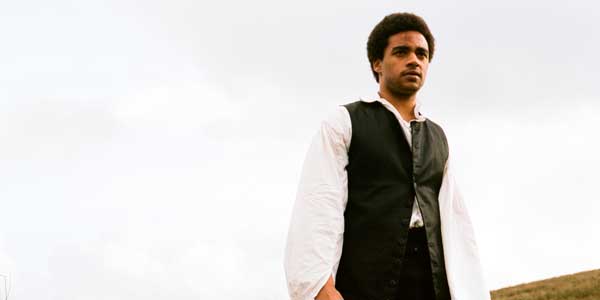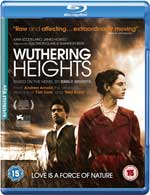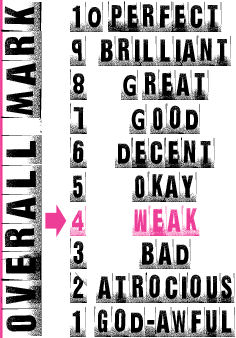
Director: Andrea Arnold
Running Time: 129 mins
Certificate: 18
Release Date: March 26th, 2012

When this new version of Wuthering Heights was announced, it seemed like it was going to be a relatively straightforward period drama. Natalie Portman, Abbie Cornish and Gemma Arterton were cast as Cathy at various points, while Michael Fassbender and Ed Westwick could have been Heathcliff. However the comparatively traditional directors John Maybury (The Edge Of Love) and Peter Webber (Girl With A Pearl Earring) came and went from the production, and from the moment Andrea Arnold was hired following their departure, it was clear this was going to be something rather different to what had been expected.
Arnold made her name with her 2003 Oscar-winning short Wasp, following it up with the feature-films Red Road and Fish Tank. All of those see life in rather grim terms, with Fish Tank and Wasp looking at people living dead-end lives in deprived areas, where pretty much everyone and everything has given up on them. With Wuthering Heights, Arnold doesn’t make any concessions to the period drama form, instead seeing the story in exactly the same terms as her contemporary tales and filming it in the same way. The result is a self-consciously realist, arthouse movie, but telling a classic story of people in the mid-19th Century. Here the moors are the equivalents of the council estates, with people struggling to survive and happiness a precious commodity.
The basics of the story are present, although as Arnold couldn’t find a real gypsy to play Heathcliff (after she’d let Ed Westwick go and decided on a non-famous cast) and so we get our first mixed race take on the character, as played by James Howson and, in his youth, Solomon Glave. Heathcliff is a poor boy rescued and brought into the Earnshaw family, where he develops a bond with his foster-sister, Cathy. However his foster-brother grows jealous of him – not least because he’s an inveterate racist – and when Mr. Earnshaw dies, he starts to make Heathcliff’s life miserable. Then, as adults, Heathcliff and Cathy still have strong feelings for one another, which begin to destroy them and those around them.
It’s certainly an interesting idea to make a period drama but in the style of a modern, realist, arthouse drama, with no score, largely natural lighting and handheld cameras. Arnold certainly manages to bring something different to the text than we’ve seen before. However the film suffers from the same problems as many other arty, slice-of-life dramas, including some dodgy acting, slow-pacing and a tendency to see everything about life as so grim that it stops seeming real.
Indeed, the idea of a good time for the characters in this Wuthering Heights is to sit next to someone in silence, which they occasionally get to do between bouts of anger, racism, beatings and general unpleasantness. It’s just all too grim for its own good.
It’s difficult not to feel that perhaps Arnold was so keen to avoid any period drama clichés that eventually she lost sight of the core of the story – the characters – so that Cathy and Heathcliff’s bond becomes inexplicable, rather than as in the book, where it’s the one thing that makes sense and helps anchor a lot of the nonsense that surrounds it (sorry teenage girls, but lots of Wuthering Heights is rather silly). The director even opts for the film to have a 4:3 aspect ratio – like old style TVs – which seems to be an obvious way to signpost that this isn’t your typical Wuthering Heights with widescreen shots of wild moorland, but like many other things in the film, it comes across as an unnecessary affectation.
Wuthering Heights has been adapted for the screen many times, but there’s never been a definitive screen version (with many feeling there never can be), and while Andrea Arnold’s film is definitely bold and has interesting idea, it’s also rather tedious. The moorlands may be famously bleak, but this is taking the piss.
However one thing that can’t be faulted is the cinematography. The film looks extremely good and that’s really brought out on Blu-ray, so while the picture may not stretch to the widths of your widescreen TV, the image you do get is sharp and looks great in HD. Arnold may not go in for widescreen shots of moorland, but she and cinematographer Robbie Ryan certainly come up with some great imagery.
Overall Verdict: It’s an interesting idea to film Wuthering Heights as a realist arthouse movie, but while it has some interesting things to say about racism and obsession, overall it comes across as affected and rather tedious.
Reviewer: Tim Isaac





Leave a Reply (if comment does not appear immediately, it may have been held for moderation)